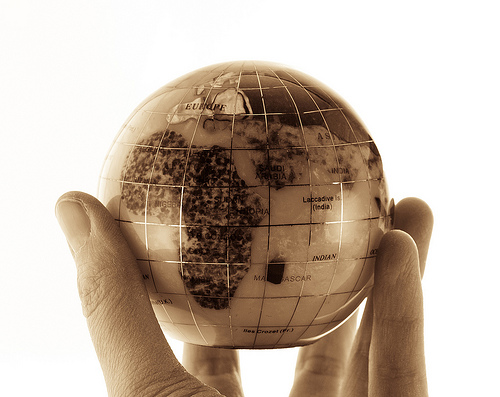Published on
The Evolution Of Higher Education Across The World

The quality of teaching and learning has always been a central theme in higher education, which is why each year, all around the world, educational institutions show numerical evidence, of their achievements from various taxonomies and indicators, highlighting the achievements and minimizing the difficulties. After all, problems mark a direction to follow to have improvements.
That is why I started a qualitative research involving voluntarily members of three academic discussion groups in LinkedIn and a group on Facebook. I posed two questions:
1. How is higher education in your country?
2. What are the positive and negative points? What would you change?
The groups were selected in a way, making possible to have samples from across Latin America and the rest of the world. The research experience has been very enriching, because when it’s possible to utilize official statistics from every country, evaluations form peers, universities themselves, and articles circulating in lathe to higher education, it is possible to see that the quantity is only one side of the current situation in higher education in various parts of the world.
Of course, each country has a vision of what are educational needs and focuses its efforts to evaluate and solve different aspects. To mention only some models and their differences, it is possible to find the American model, which seeks the improvement of institutional programs and in view of the quality assurance afforded to the public, and assessment leans towards the achievement of collective goals.
In a different way, the European continental model, is more tending to the improvement and quality, not for a public good, but Governmental, so the procedure of evaluation is from external peer teams.
A variant of this model is the Scandinavian whose purpose focuses on the assurance to the public and the improvement of the system, but the evaluation is done from occupational standards. That is why institutional self-assessment processes which demonstrate a marked accountability.
A relevant model is the British, which places emphasis on the maintenance of the quality of the academic titles and clearly establishes the criteria to achieve this goal. To do it, uses evaluation by peers and indicators of performance, which is why teachers decide among themselves what should be taught and who will do it.
However, institutional or governmental policies that have created different models of education are not more than a reflection of the evolution that higher education has worked throughout the centuries.
Different needs, different visions
Various crisis, especially economic have changed in a micro and macro way higher education, for example, more technological options have been created services online in order to open more seats to more students and thereby have a labor force better prepared at the social level. This makes it look and think higher education otherwise, as in the case of the India where many private institutes opened in response to the population increase and the educational demand.
The answer was thousands of private institutions for the area of engineering s and other technical issues that coupled with online options enabled that increasingly more people studying.
It must be said that the India had a millennial history in the field of higher education so; it has been able to go social needs-oriented educational reality. That is why they boast a wide reputation in preparing its students.
A special case is Pakistan; a developing country which in past decade joined the outstanding issues, which therefore began serious processes of accreditation of higher education, which has led to the exchange of professional experiences and research. A highlighted point is the remarkable commitment of the students to learn.
As everywhere, at this country has been opened multiple public facilities that are very well organized. Entrance examinations are only focused on the knowledge of the applicant regardless of their economic status.
But regardless of whether they are public or private is credited by the Higher Education Commission (HEC) and some have international accreditation. Although if there are differences in the entry academic criteria.
A very important point in the case of Pakistan, is the new open door for women to study. This issue may not be relevant in other cultures, but it’s an effort in that part of the world.
Higher education in the United Kingdom, seems so well that it currently suffers from a demand by foreign students that has given rise to discussions in various forums about whether perhaps education is seeking to attract workers with good skills or if the subject are Government earnings with University fees. It seems that item is and will continue to be discussed in media and journals, but this gives rise to talk about the quality of their education.
However, as in any other country has undergone changes of course, looking to accommodate a growing population that requires an educational proposal. What generates larger groups in the initial courses that gradually, as in any other country, decreasing with the passage of courses.
United Kingdom changes the educational direction to government reforms, with a broad academic participation.
In Spain, the perception is a good quality of education, however, the curricula are centered in theory and very little in practice, at least in the scientific areas, and there is a rigidity that sometimes the student cannot continue, leaving unfinished studies.
On the other side of the world, in Latin America, higher education has been in crisis since long time ago. The comments in this part of the world are focused on the difference between public and private education that builds an idea of a classist education and only who have resources can have a good education. These comments were collected from participants of Colombia, Mexico. But the situation changes with the comments collected from Argentina and Brazil, where participants commented to find a good quality, even in public institutions.
Of course there are different problems, which have tried to be resolved offering more courses of master, specialties, although in the case of the doctorates s, only Brazil has overcome difficulties, followed only by Mexico but with results very poor in that regard compared to the national population.
Come back for the second part of Dzib Goodin’s investigation of international higher education, examining common problems found throughout the world of education and perspectives as to how to affect change.
Author Perspective: Administrator



